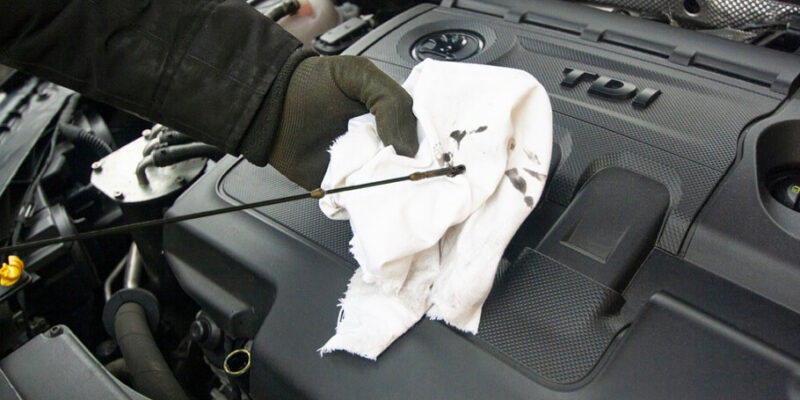When it comes to car care, you may be diligent about getting regular oil changes, checking your tire pressure, and topping off your fluids, but you could be overlooking some things that are putting your health at risk. Is your car making you sick?
Think about the runny noses you’ve wiped. The drinks you’ve spilled on your floor mats. The crumbs that lurk in the cracks and crevices. You get the idea.
Even if you’re good about cleaning your car, there might be some health hazards hidden beneath the surface. Could your car use a checkup? Keep reading to learn about the potential health risks in your car and what you can do to fix them!
1. Your car is a Petri dish on wheels
You might be hyperaware of disinfecting the high-touch surfaces and objects around your home, like doorknobs, kitchen counters, and bathroom sinks, but how often are you cleaning and disinfecting your car? Car interiors are some of the filthiest places on the planet!
According to a CarRentals.com study, there are approximately 700 different strains of bacteria living in the average vehicle. The average steering wheel has 629 colony-forming units (CFU) per square centimeter, aka bacteria. That makes the average steering wheel six times dirtier than the average cell phone screen (100 CFU), and four times dirtier than a public toilet seat (172 CFU)!
How to fix it: For easy clean-ups on the go, keep a pack of disinfecting wipes in your car at all times to use before and after eating, grocery shopping, or pumping gas. (The average gas pump handle is nearly 12,000 times dirtier than a public toilet seat!)
Make it a point to disinfect the interior of your car every week or couple of weeks with antibacterial wipes or disinfectant spray and a microfiber cloth or rag to get rid of germs and potentially hazardous bacteria. Wipe down all the touchpoints in your car, like your steering wheel, seat belt buckle, gear shift, cup holders, door handles, dashboard, buttons, touchscreens, etc.
2. Your air filter is filthy
Your air filter prevents debris and contaminants from entering your car’s HVAC system – and your lungs! A dirty air filter can allow contaminants like dust, dirt, and pollen to slip through. If you or your passengers have allergies or breathing problems, your air filter could be making them worse. A sore throat, stuffy nose, or sneezing are signs that your air filter might need to be replaced.
How to fix it: You should replace your cabin air filter at least once a year, ideally right before the start of allergy season. Otherwise, you’re unnecessarily exposing yourself to contaminants and allergens. No thanks!
3. Your A/C vents are growing mold
Mold and mildew can form inside your car’s air conditioning vents if they get damp, especially in the summer when humidity is high. Those mold spores can flow into your car’s cabin through the vents when you turn on the A/C or heat. Chances are, those vents are aimed right at your face. Yuck.
Could you have mold growth in your car? According to the Centers for Disease Control, mold exposure can cause eye and throat irritation, coughing, and sneezing – classic sick car syndrome symptoms.
Sick car syndrome, also called toxic car syndrome, is a serious thing that can happen if there’s condensation in your car’s A/C system. If you notice you or any of your passengers are feeling these symptoms in your car, you may want a mechanic to check out your vents.
How to fix it: If you actually smell mold when you turn on your car’s A/C system, it could be a sign that your evaporator core is moldy. Run the heat with the vents closed for about 10 minutes to help dry out the vents and evaporator core. You can also use a long brush that can reach into the vents to clean out mold growth. If you still notice a moldy smell, take your car to a mechanic to have these parts professionally cleaned and treated for mold.
4. Outside contaminants are coming into your car
Ever catch a whiff of exhaust, cigarette smoke, or other noxious fumes while you’re driving along? Although your air filter is designed to remove odors and toxins from the air before they can enter your cabin, it isn’t 100% effective all of the time – even if it’s a clean filter. These contaminants pass through your air conditioning vents and can cause allergy-like symptoms such as a cough, sore throat, or headache.
How to fix it: Roll up your windows to keep contaminants out and recirculate the air that’s already in your cabin by pressing the button on your A/C controls that looks like a recycling symbol or arrow turning around inside a car.
5. Your seat isn’t properly adjusted
Your driving position could be causing more strain on your body than you realize. If you deal with neck, back, shoulder, or sciatic pain, an improper driving position could be to blame!
How to fix it: Check out our tips on how to maintain a comfortable, safe driving position, and remember to take breaks and stretch your body throughout the day, especially if you’re traveling long distances.
Via: https://blog.directauto.com




